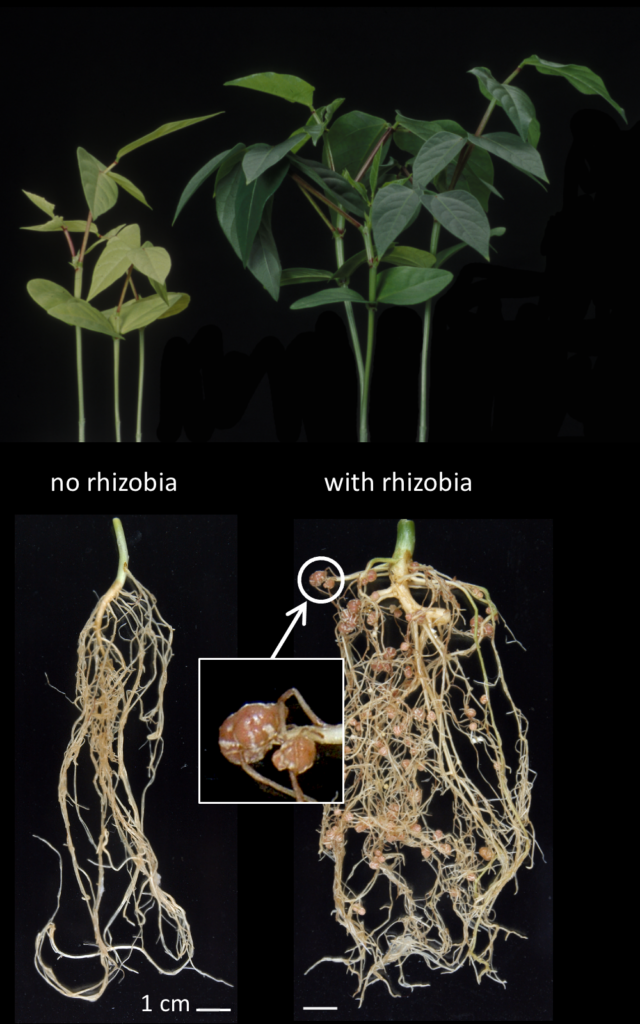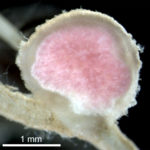Symbiotic nitrogen fixation between legumes and rhizobia
Soil bacteria who reduce nitrogen (N2) when in symbiosis with legume plants, are collectively known as rhizobia. To transform the nitrogen from the air into ammonium (NH4+) that plants can use to grow, rhizobia must first establish persistent intracellular colonies inside nodules.
When assimilable nitrogen is scarce, plant development is impaired. As shown on the picture, shoots and roots are less developped, and leaves have a lighter green color. Ultimately, those plants have lower seed yields.

Shoots and roots of cowpea plants, of which has been inoculated with a nitrogen fixing rhizobia strain.
Nodules are plant organs that are devoted to symbiotic nitrogen fixation (SNF), and legume hosts make nodules only when in contact with compatible rhizobia.

On many legume crops, such as soybean or cowpea (see images), nodules have round shapes and are only a few mm in diameter. When sectioned, active nodules are pink because of plant proteins called leghemoglobins.
Nodules are fascinating examples of intracellular infections, where each plant cell may contain milions of rhizobia. When fixing nitrogen for the benefit of legume hosts, rhizobia are called bacteroids.



